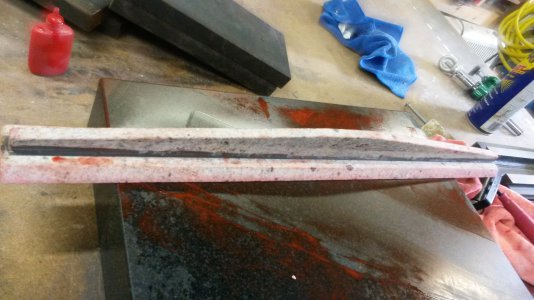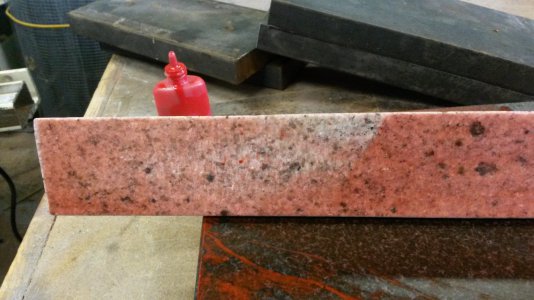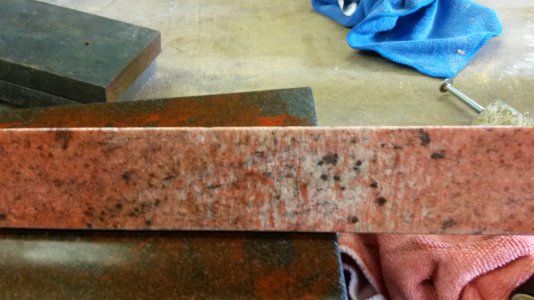- Joined
- May 10, 2012
- Messages
- 997
The Busch Precision site is interesting. If you want a laugh (or fright?), take a look at the prices on their camel backs. The small one is about 3x what I paid for my first car
I also want to add that both the previous posters have good points. Aluminum will move more than cast iron (coefficent of thermal expansion for aluminum is about double that for CI), but cast iron will move too. The thing you need to avoid in use is differential heating (getting one side at a different temp than the other) as this will cause the item to warp. Camelbacks have additional structure to prevent this, so if you can integrate ribbing into your design, that would probably help keep things flat.
Personally I am a little skeptical of the Busch design with cast iron facing. It looks like the design is balanced (cast iron on both sides) which will help, but it seems like a bad idea in general to mix materials like that. Maybe that line of straightedges is not meant for machine restoration?
I expect the secret sauce for their ironclad aluminum straightedges is either very precisely balanced thicknesses, or the glue has very specific quality’s (it allows the iron to slide a bit on the aluminum, maybe), or a combination of both to give consistent performance. I also expect a lot of attention is paid to process, i.e. making sure that the glue on both sides is laid down very consistently and to a uniform thickness. I also expect for the price and the fact that these come hand scraped that they are intended to be every bit as accurate and consistent as their cast iron predecessors. It's actualy a great idea, considering how heavy a long straightedge can be. I don't think this would work well on a camelback design, at least not without some serous engineering going into the shape and composition of the backplane.





